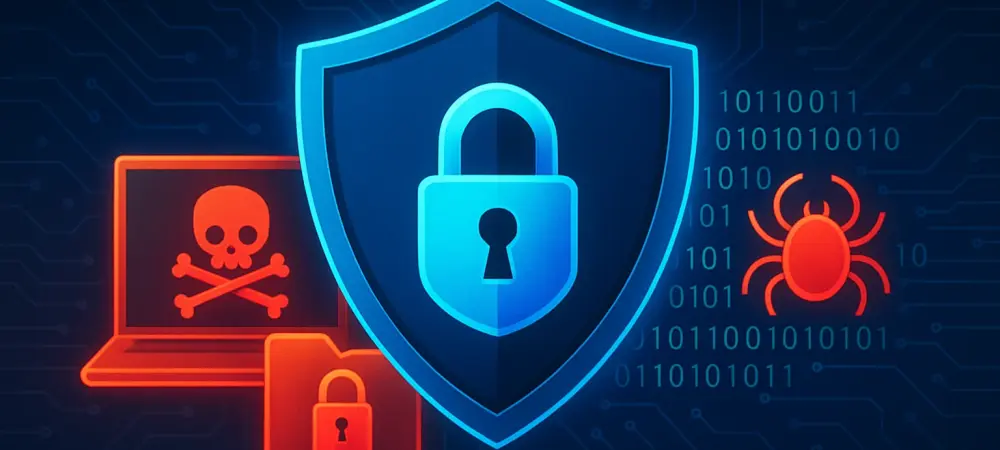Introduction to a Growing Cyber Threat
Imagine a multinational corporation waking up to find its entire digital infrastructure locked, with critical data encrypted and a ransom note demanding millions in cryptocurrency for decryption keys. This scenario, far from hypothetical, mirrors the devastating 2019 attack on a major industrial firm by the LockerGoga ransomware, which crippled operations across multiple continents. Ransomware has emerged as one of the most pressing cybersecurity threats in the digital era, with attacks escalating in both frequency and sophistication. This analysis delves into the evolving nature of ransomware campaigns, spotlighting high-profile cases involving figures like Volodymyr Viktorovich Tymoshchuk, and examines the international strategies being deployed to counter this pervasive menace.
The Escalating Danger of Ransomware Attacks
Scale and Financial Toll of Global Campaigns
Ransomware attacks have surged dramatically, impacting over 250 companies in the United States alone and causing financial losses in the hundreds of millions. Reports indicate that variants like LockerGoga and MegaCortex, active between 2019 and 2020, alongside Nefilim from 2020 to 2021, have struck businesses across nations including the U.S., France, and Germany. These campaigns have evolved rapidly, exploiting vulnerabilities in corporate networks and often leaving victims with no choice but to pay hefty ransoms to regain access to their systems.
Sector-Specific Targeting and Devastation
Critical sectors such as healthcare and industrial operations have become prime targets for ransomware operators seeking maximum disruption. The dual threat of data encryption and the potential leakage of sensitive information if ransoms remain unpaid adds immense pressure on victims. Hospitals, for instance, face life-threatening consequences when patient records are locked, while manufacturers suffer halted production lines, amplifying the economic fallout of these attacks.
High-Profile Case Study of Cybercriminal Operations
A notable example involves Volodymyr Viktorovich Tymoshchuk, a Ukrainian national accused of orchestrating ransomware schemes under aliases like “deadforz” and “farnetwork.” Allegedly tied to LockerGoga, MegaCortex, and Nefilim operations, Tymoshchuk reportedly tailored decryption keys to individual victims, ensuring payment for data recovery while sharing ransom proceeds with affiliates. His activities highlight the organized, profit-driven nature of modern cybercrime, targeting hundreds of firms globally and extorting millions.
Global Efforts to Counter Cybercrime
Law Enforcement’s Unified Response
The severity of ransomware as a threat to blue-chip companies and critical infrastructure has been underscored by figures like U.S. Attorney Joseph Nocella Jr., who emphasized its potential to destabilize economies. International investigations, spearheaded by the FBI, have seen collaboration with authorities in France, the Czech Republic, Germany, Ukraine, Europol, and Eurojust. This unified global response aims to disrupt ransomware networks through coordinated legal actions and intelligence sharing.
Preemptive Actions and Victim Support
Law enforcement agencies have adopted proactive measures to mitigate ransomware damage, including notifying potential targets before attacks fully deploy. Such interventions have prevented countless incidents by enabling companies to bolster defenses in time. These efforts reflect a shift toward anticipation over reaction, aiming to outpace cybercriminals in an ever-evolving digital battlefield.
Technological Breakthroughs Against Extortion
A significant milestone occurred in September 2022 with the release of decryption keys for LockerGoga and MegaCortex through the “No More Ransomware Project.” This initiative allowed victims to recover encrypted data without paying ransoms, marking a tangible victory against extortion schemes. Such technological solutions, backed by international cooperation, demonstrate the power of collective action in neutralizing cyber threats.
Looking Ahead at Ransomware Defense
Innovative Strategies and Persistent Obstacles
The future of ransomware defense hinges on enhanced global collaboration and the development of cutting-edge cybersecurity tools. From 2025 onward, initiatives are expected to focus on predictive analytics and artificial intelligence to detect threats before they strike. However, challenges persist with the increasing sophistication of ransomware variants and the difficulty in tracking elusive cybercriminals like Tymoshchuk and his associates.
Incentive Mechanisms and Their Impact
Programs like the U.S. Department of State’s Transnational Organized Crime Rewards Program, offering up to $11 million for information on key ransomware figures, signal a robust commitment to dismantling these networks. While such incentives may lead to significant arrests, they also face the risk of driving cybercriminals to adopt more covert tactics. The balance between disruption and adaptation remains a critical concern for policymakers.
Wider Implications for Cybersecurity
Beyond immediate defenses, the broader impact of ransomware countermeasures includes shaping corporate and governmental approaches to digital security. Successful interventions can inspire confidence in collaborative frameworks, yet the potential for evolving attack methods necessitates constant vigilance. The ongoing battle against cybercrime will likely influence everything from regulatory policies to private sector investment in protective technologies.
Reflections on a Cyber Battle
Looking back, the scale of devastation caused by ransomware attacks orchestrated by figures like Tymoshchuk revealed the urgent need for a fortified global response. International law enforcement achieved notable successes through preemptive notifications, the release of decryption tools, and legal actions against key perpetrators. Moving forward, businesses and governments must prioritize robust cybersecurity frameworks, invest in advanced threat detection, and foster even deeper cross-border partnerships to stay ahead of cybercriminals in this relentless digital conflict.

